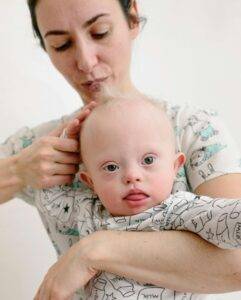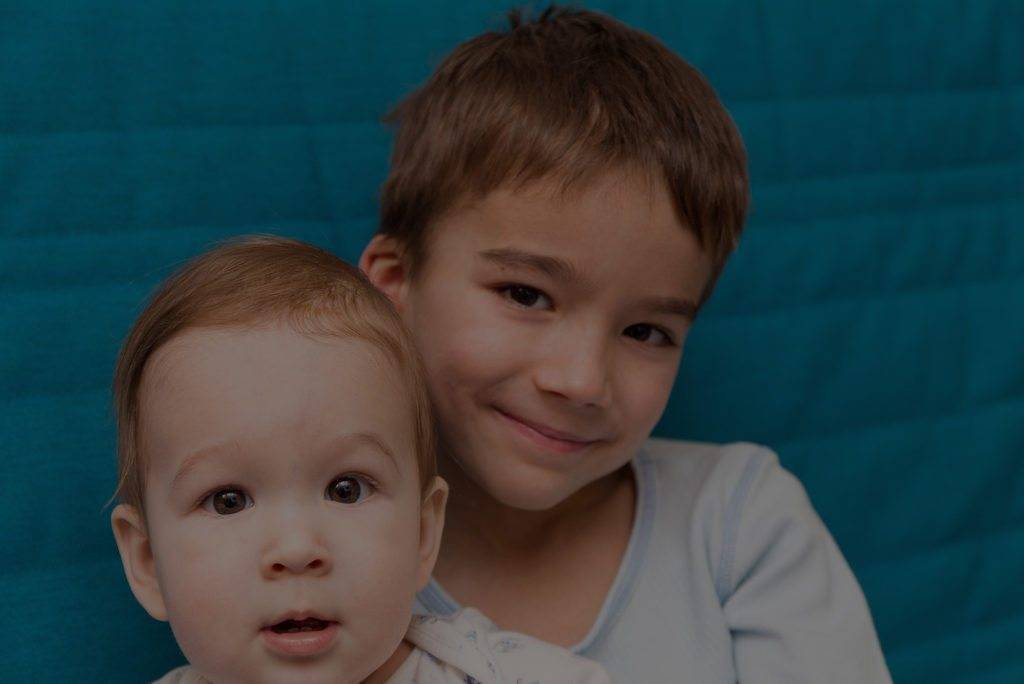Bringing home a newborn baby is filled with joy, but it comes with questions and concerns for first-time parents. One concerning issue is if your newborn baby without soft spot, known as the fontanelle. For most babies, the head area doesn’t harden until the skull bones fully come together during the baby’s first two years.
But what if your baby doesn’t seem to have a soft spot, or it closes too early? Should you be concerned? This post explores everything you need to know about your newborn’s soft spot, why it’s important, and when you need medical advice.
What Is a Newborn Baby Soft Spot?
A soft spot, or fontanelle, is a critical anatomical feature of a newborn’s skull that allows flexibility and growth during the early stages of life. It’s a gap between the bones in the skull where the bones haven’t fused yet, providing essential space for brain development. Babies are born with two main fontanelles:
- Anterior fontanelle: The larger of the two fontanelles, a diamond-shaped soft spot at the top of the head, measuring about 2.1 cm in diameter. It’s the one most parents are familiar with, and it typically closes between 7 and 19 months after birth.
- Posterior fontanelle: This is smaller and triangular at the back of the head, measuring approximately 0.5 cm in diameter. It usually closes much sooner, typically between 6 weeks and 3 months of age.
The soft spot is more than a quirk of newborn anatomy. They serve crucial purposes related to their health and development. Here are some of the key functions:
- Allowing for brain growth: Babies’ brains grow incredibly fast during the first two years of life, and without the fontanelles, the skull could not expand quickly enough to accommodate the rapid growth.
- Providing flexibility in childbirth: The soft spot helps the baby’s head mold to fit through the birth canal, making childbirth easier. If a newborn’s skull bones were already fused, childbirth would be far more difficult for the baby and the mother.
- Affords a glimpse into a baby’s health: The soft spot is a window into a baby’s overall health. During checkups, the pediatrician assesses the health and hydration of the baby to ensure everything is progressing normally. For instance, a sunken fontanelle indicates dehydration; a bulging fontanelle signifies increased pressure in the brain due to infection or fluid buildup.
So, what happens if your newborn baby without soft spot? Let’s explore.
Newborn Baby Without Soft Spot: What Does it Mean
Some babies, though, are born without a noticeable soft spot. The absence of a soft spot, or the premature closing of a baby’s fontanelle, is a condition known as craniosynostosis. This happens when one or more bones in a baby’s skull fuse too early, preventing the brain and skull from growing correctly. This fusion limits the space for the brain to grow, potentially leading to developmental issues if left untreated. Craniosynostosis is rare, occurring in about 1 in every 2,500 births.
What Is Craniosynostosis?
This is a condition in which the bones of a baby’s skull close too early, often before the brain has finished growing. The skull consists of several plates of bones held together by sutures, like seams. When the sutures close prematurely, it changes the shape of the baby’s head and, in some cases, puts pressure on the brain.
Craniosynostosis affects about 1 in every 2,500 births and ranges in severity. Some babies may have only one fused suture, while others may have multiple sutures affected. This could be attributed to genetics, though most cases have no associated syndromes.
Types of Craniosynostosis
The type of craniosynostosis your baby has depends on which sutures are affected. Here are some of the most common types:
- Sagittal Synostosis: This is the most common form and occurs when the sagittal suture, which runs from the front to the back of the head, fuses too early. Babies with this type have a long, narrow head shape.
- Coronal Synostosis: This type affects the coronal sutures, which run from ear to ear over the top of the head. It results in an asymmetrical head shape, with one side flattened and the other bulging.
- Metopic Synostosis: The metopic suture runs from the top of the head down the middle of the forehead. When this suture fuses too early, the forehead may appear pointed or triangular, and the eyes seem too close together.
- Lambdoid Synostosis: This is the rarest form and affects the lambdoid suture at the back of the head. In this condition, the baby has a flat spot on one side at the back of the head. This condition is sometimes confused with positional flattening, caused by too much time spent lying on one side.
Causes of Craniosynostosis
In many cases, the exact cause of craniosynostosis is unknown. Most instances are sporadic, meaning they happen by chance and are not inherited. However, 10-20% of cases are related to genetic syndromes, such as Crouzon, Apert, and Pfeiffer. These syndromes lead to varied developmental issues beyond craniosynostosis, including problems with the hands, feet, and face. These underscore that craniosynostosis is part of a broad pattern of developmental abnormalities.
While the condition can be related to genetic mutations, most babies with craniosynostosis don’t have a family history of the condition or an underlying genetic syndrome. It is more common in males than females, and maternal factors like smoking or certain medications taken during pregnancy may increase the risk.
Symptoms of Craniosynostosis
This medical condition may be noticeable at birth, but in some cases, it may not become obvious until the baby is a few months old. Here are some common signs:
- Abnormally shaped head: This is the most obvious with an unusual head shape. Depending on which sutures have fused, the head appears long, narrow, asymmetrical, or pointed. If your baby’s head seems unusually shaped, it could be a sign that the sutures in the skull have fused prematurely.
- Hard ridges along the skull: You may see and feel hard ridges along the seams where the skull bones meet.
- Slow or no head growth: If your baby’s head doesn’t seem to grow as quickly as expected, it could be a sign that the sutures have closed too early, or the skull bones restrict brain growth. This is one of the vital reasons why measuring the head circumference is part of the routine during pediatric checkups.
- Developmental delays: In severe cases, there’s increased pressure on the brain, leading to developmental delays, irritability, feeding difficulties, or problems with motor skills.
When Should You Seek Medical Attention?
If you notice that your baby’s head has an unusual shape, or you might think the soft spot is missing or closed, consult your pediatrician. Early diagnosis is crucial since untreated craniosynostosis leads to complications such as increased intracranial pressure, which can affect brain development, vision, and cognitive function.
How Is Craniosynostosis Diagnosed?
- Physical Examination: If you or your pediatrician suspect craniosynostosis, the baby’s head is examined. The doctor will look for abnormal head shapes or ridges along the sutures. The pediatrician may refer you to a specialist for further evaluation.
- Imaging Diagnostics: An X-ray or CT scan is done to confirm the findings during the physical examination, whether the skull bones have fused prematurely.
- Further Management: In some cases, the doctor may recommend genetic testing to determine if the craniosynostosis is part of a genetic syndrome. Identifying an underlying syndrome can help guide treatment and provide information about the long-term prognosis.
Treatment Options for Craniosynostosis
The good news is that craniosynostosis is treatable, especially when detected early. Early interventions generally lead to better outcomes. The primary treatment is surgery, which aims to correct the shape of the head and create more space for the brain to grow. Depending on the severity and type, different surgical approaches are recommended.
- Open surgery or cranial vault remodeling: This is the traditional and most common approach and is typically performed between 6 and 12 months of age. The surgeon removes and reshapes the fused bones of the skull to allow for normal brain growth. The surgeon makes an incision in the baby’s scalp and carefully separates the fused bones. While it’s more invasive than endoscopic surgery, it’s highly effective.
- Endoscopic surgery: This is a minimally invasive option and is performed when the baby is younger, before 3 months of age. The surgeon makes small incisions. A small camera (endoscope) and special tools guide the surgeon in removing the fused suture. This approach involves less blood loss and a shorter recovery time but is only suitable for certain cases of craniosynostosis.
Post-Surgery Care
Post-surgery, many children go on to develop normally without any long-term complications. The skull will continue to grow in a typical way, allowing the brain the space it needs to expand. Following surgery, your baby may need to wear a special tool, the cranial molding helmet, to guide the skull’s growth into a more typical shape.
The helmet gently molds the skull as it grows over the coming months. Regular follow-ups with your surgeon and pediatrician are necessary to monitor the baby’s head growth and ensure positive outcomes.
Newborn Baby Without Soft Spot: Other Conditions
In some cases, parents may worry about a soft spot being “missing” when, in fact, it’s just difficult to feel or see. A baby’s soft spot may appear smaller than expected or close earlier than usual but within the normal range, even in a healthy baby. However, there are other conditions, aside from craniosynostosis, for your newborn baby without a soft spot. Additionally, certain metabolic conditions affect the soft spots and overall skull development.
- Microcephaly: A condition when a newborn has a smaller head size than expected, since the brain didn’t develop properly during pregnancy. Babies with microcephaly also have a smaller-than-normal fontanelle and may close prematurely as well. Depending on severity, this condition leads to developmental delays and other neurological issues. Early intervention is crucial.
- Hypothyroidism: Congenital hypothyroidism (an underactive thyroid present at birth) can also lead to early closure of the fontanelle. This metabolic disorder affects bone and brain development, and early diagnosis and treatment are crucial to prevent long-term complications. Newborn screening tests are performed early, allowing prompt treatment with thyroid hormone replacement.
Newborn Baby Soft Spot: When Should You Be Concerned?
A healthy fontanelle should feel:
- Soft and Flat: It may exhibit slight pulsation due to blood flow, which is normal.
- Responsive to Position Changes: The appearance changes based on the infant’s position or activity level. For example, it may bulge when crying but should return to normal when calm.
However, other changes in the soft spot or fontanelle may signal an issue. For instance:
- Sunken soft spot. A soft spot that looks sunken may indicate dehydration or malnutrition. Accompanying symptoms are dry mouth, few wet diapers, or lethargy. Contact your pediatrician right away.
- Bulging soft spot. The soft spot looks swollen or bulging, indicating increased pressure inside the skull. This may be due to an infection like meningitis, or fluid buildup in the brain known as hydrocephalus. This warrants immediate medical attention.
The Bottom Line: Should You Be Concerned?
Your newborn baby without soft spot? While it’s natural for parents to be concerned if they can’t feel or see their baby’s soft spot, remember that not all babies are the same. Some newborns may have a small or hard-to-detect fontanelle, which is normal. However, it’s always best to seek advice from your pediatrician if the soft spot appears closed or you notice unusual head shapes or other symptoms. The goal is to rule out potential issues, such as craniosynostosis, developmental conditions, or metabolic disorders.
While most babies develop normally, early diagnosis, treatment, and intervention are crucial if something isn’t quite right. Your pediatrician can guide you through any concerns and help ensure your baby has a healthy start to life—growing and developing properly.
For more information on your baby’s development, check out these helpful articles to ease your concerns and learn what to expect during this exciting stage of parenthood.
- Is My Child’s Head Normal?
- 5 Essential Reasons Why Regular Pediatrician Visits Are Vital for Your Newborn’s Health





